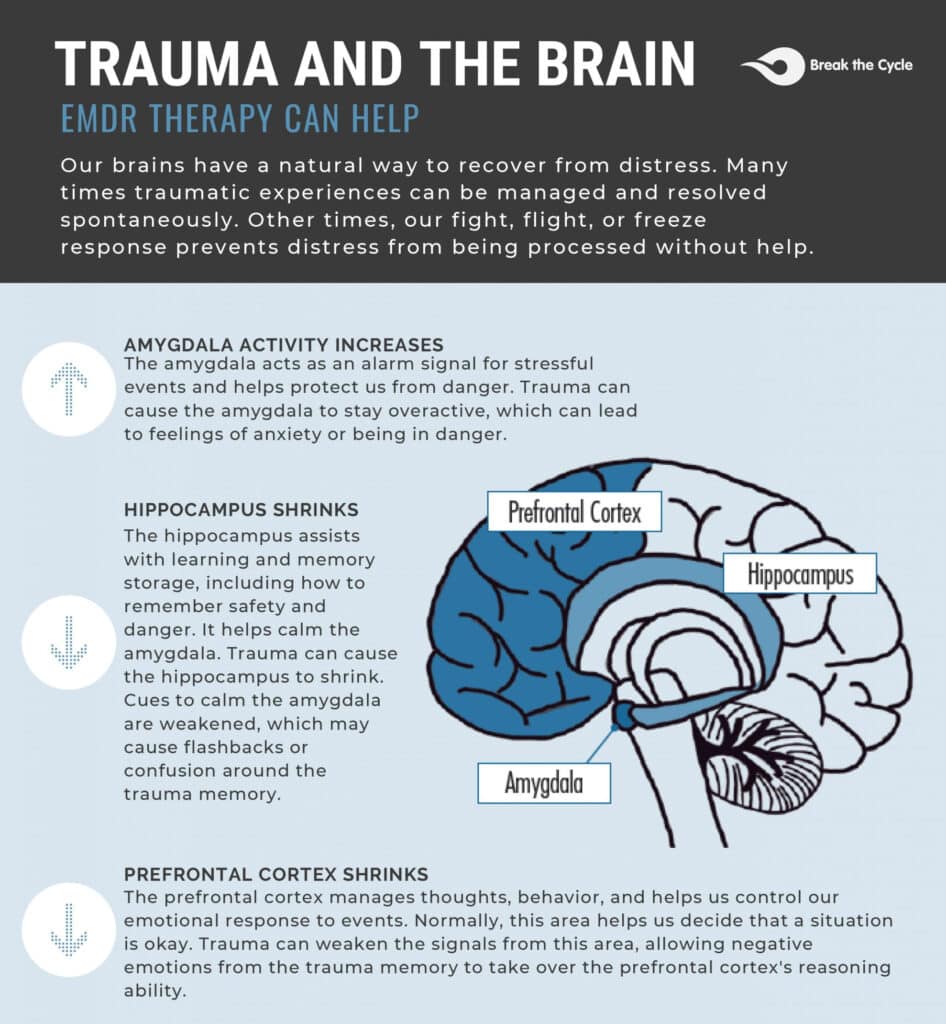
Introduction to EMDR
Eye Movement Desensitization and Reprocessing (EMDR) therapy (Shapiro, 2001) was initially developed in 1987 for the treatment of posttraumatic stress disorder (PTSD) and is guided by the Adaptive Information Processing model (Shapiro 2007). EMDR is an individual therapy typically delivered one to two times per week for a total of 6-12 sessions, although some people benefit from fewer sessions. Sessions can be conducted on consecutive days.
The Adaptive Information Processing model considers symptoms of PTSD and other disorders (unless physically or chemically based) to result from past disturbing experiences that continue to cause distress because the memory was not adequately processed. These unprocessed memories are understood to contain the emotions, thoughts, beliefs and physical sensations that occurred at the time of the event. When the memories are triggered these stored disturbing elements are experienced and cause the symptoms of PTSD and/or other disorders.
Unlike other treatments that focus on directly altering the emotions, thoughts and responses resulting from traumatic experiences, EMDR therapy focuses directly on the memory, and is intended to change the way that the memory is stored in the brain, thus reducing and eliminating the problematic symptoms.
During EMDR therapy, clinical observations suggest that an accelerated learning process is stimulated by EMDR’s standardized procedures, which incorporate the use of eye movements and other forms of rhythmic left-right (bilateral) stimulation (e.g., tones or taps). While clients briefly focus on the trauma memory and simultaneously experience bilateral stimulation (BLS), the vividness and emotion of the memory are reduced.

Robert Mogar - CAP, MSW, EMDR Therapist
Since 2004, Robert has remained focused on his passion to help others and choosing to be part of the solution to our nation’s substance abuse epidemic. His education includes Bachelors of Psychology/ Masters in Social Work and is a Certified Addiction Professional (CAP). Robert’s reputation and community involvement has enhanced the team network at Break the Cycle. His dedication and experience in the recovery field is a natural fit in working with clients to provide the best possible care.
Robert is Break the Cycle’s lead clinician, and is available to provide EMDR therapy services (in Volusia and Flagler Counties) to individuals seeking freedom from single-event and complex trauma. CLICK HERE TO CONTACT US TODAY.